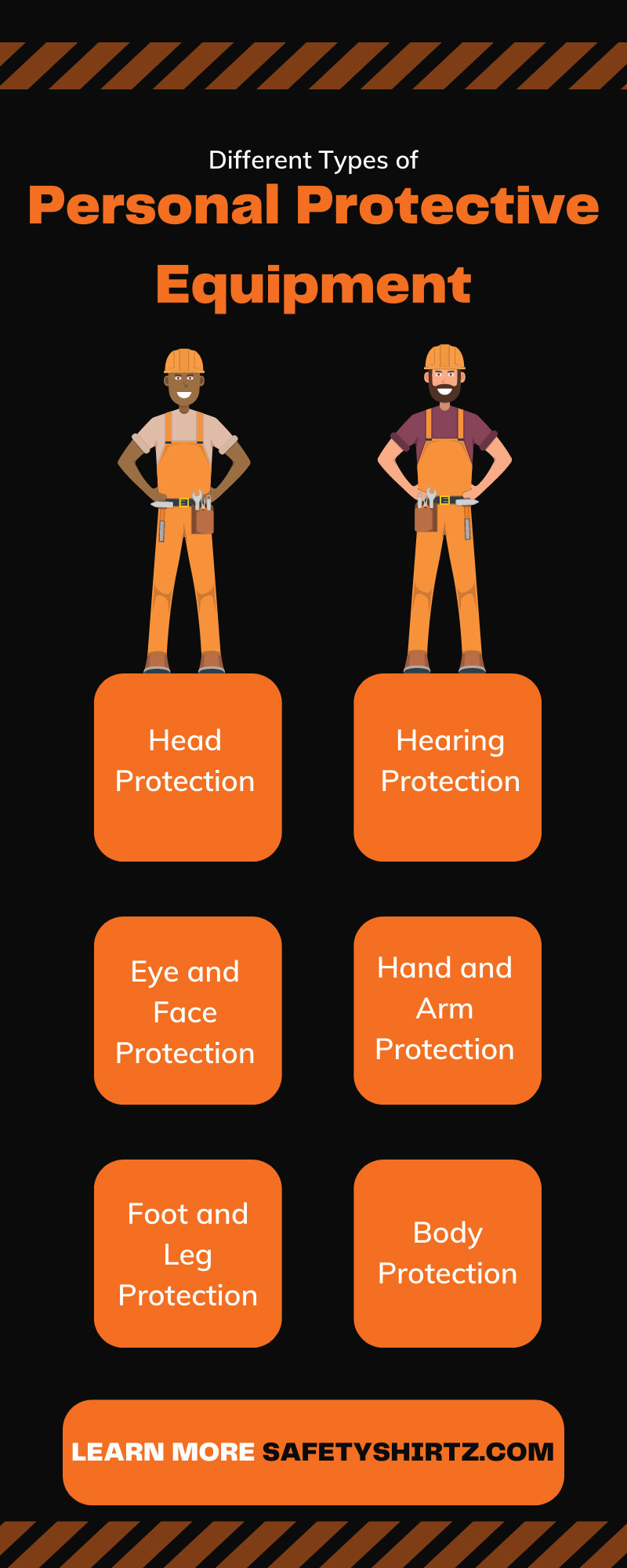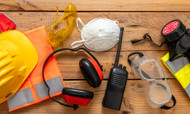The 7 Different Types of Personal Protective Equipment
29th Nov 2022
The Occupational Safety and Health Administration (OSHA) determines what personal protective equipment (PPE) workers should wear in or near hazardous conditions. PPE helps ensure workers’ personal safety.
Employers have a responsibility to perform a workplace hazard assessment and select and enforce the use of PPE. Find out more about how the seven different types of personal protective equipment protect workers in various industries.
Respiratory Protection
OSHA creates specific respiratory protection standards for general industry, maritime, and construction. These requirements protect workers from hazards that may cause lung impairment, disease, cancer, or death. Hazards include harmful dust, fog, gases, vapors, and environments with insufficient oxygen.
Respirators can protect workers by removing contaminants from the air or supplying clean, breathable air from another source. Some respirators have reusable and replaceable cartridges, canisters, or filters.
Workers must wear the right respiratory PPE equipped with the correct cartridge, canister, or filter to protect against specific hazards. For example, a filtering facepiece respirator can filter dusts and mists but will not protect the wearer from gases and vapors. A powered air-purifying respirator (PAPR) will protect against gases, vapors, or particles when equipped with the correct cartridge, canister, or filter. Respiratory PPE capabilities and limitations illustrate how critical it is for workers to understand their PPE and work environment.
Head Protection
Head protection includes helmets, hard hats, bump caps, and guards. Head PPE absorbs some of the force from impact and provides resistance to penetration from falling or flying objects. Since these items cannot provide complete protection from severe impact and penetration, workers must remain vigilant at the work site.
Bump caps don’t protect from falling or flying objects. Instead, they guard workers’ heads against bruises, scrapes, and bumps caused by accidental impact with fixed objects like low beams.
Hard hats display information, including the ANSI designation and type and class designations. These labels inform workers of the types of hazards the hard hats protect against and the level of protection they provide. For example, some hard hats reduce the force of impact from a blow to the top of the head. Others reduce the force of impact to the sides of the head. Employers must always replace hard hats after they sustain impact, even if the damage is not noticeable.
Hearing Protection
The next type of personal protective equipment concerns workers’ hearing. People in many industries, including transportation and agriculture, are exposed to noises that can damage their hearing.
Hearing PPE is an important component of any occupational hearing loss prevention program. Such protection includes equipment that fits into the ear canal or completely over the ear. This PPE category includes expandable foam plugs, canal caps, and earmuffs.
The National Institute for Occupational Safety and Health (NIOSH) developed HPD Well-Fit to measure how well hearing protection works. The test system measures the amount of sound that hearing PPE reduces for an individual and identifies workers who do not have adequate protection.
Eye and Face Protection
Eye and face hazards include radiation, heat, chemicals and biologics, dust, flying objects, and splashes. Types of eye and face protection include safety glasses, safety goggles, laser safety glasses and goggles, face shields, welding shields, and welding helmets.
Workers wear specific eye and face PPE for adequate protection. Safety glasses protect the covered area from impact and heat hazards. Safety goggles offer the same protection and more, including protection from chemicals and dust.
Glasses and goggles are primary protective devices. Face shields and welding shields are secondary protective devices that guard the entire face against hazards. When wearing a secondary device, the worker must also wear a primary protective device.
Hand and Arm Protection
Hand and arm PPE protects from many hazards, including abrasion, cuts, amputation, radiation, fractures, vibration and grip, and electrical shock. Specialized gloves guard against worker injury. If workers complete tasks involving multiple hazards, they must wear gloves that protect against all hazards or possibly wear more than one type of glove simultaneously.
Glove size, cuff type, length, and lining type all influence the degree of protection gloves can provide. When it comes to chemical-resistant gloves, workers must understand when gloves can provide only limited protection from chemicals. The type of chemical and frequency and duration of contact with the chemical affect the efficacy of the gloves’ resistance.
Foot and Leg Protection
Heavy falling and rolling objects can crush a person’s legs or feet. Sharp objects and hot, cold, corrosive, or poisonous substances could easily penetrate regular footwear. Electric currents and slippery walking surfaces also contribute to the need for protective footwear.
OSHA recommends several footwear protection types that can cover the foot partly or completely. For example, workers can fit toe guards over the ends of their regular shoes to prevent foot injury. They can also attach metatarsal guards to the outside of the shoe to protect their instep.
People who work near hazardous electric currents, such as electricians and utility workers, wear protective footwear that fits in one of three protection classes. Other protective boots include slip-resistant, waterproof, and insulated boots.
Leg protection includes leggings made from leather and aluminized rayon. Combination foot and shin guards protect the lower legs and feet from hazards such as welding sparks.
Body Protection
Finally, body protection equipment can guard against temperature extremes, radioactive materials, falls, sharp objects, and splashes. Examples of body protection PPE include lab coats, coveralls, jackets, aprons, surgical gowns, and full-body suits.
Wear PPE that fits properly for effective protection. Launder full-body PPE separately from other clothing types. Sometimes, body protection PPE requires decontamination. Workers must always inspect PPE before using it.
A proper fit does more than ensure that body protection PPE covers enough of the worker’s body. When PPE doesn’t fit correctly, it can contribute to burnout. Well-fitting PPE can encourage worker use and contribute to equitable working conditions.
SafetyShirtz carries stylish safety hoodies for a range of body types. Whether you’re looking for a high visibility or enhanced visibility hoodie, check out our selection of comfortable clothing. Find your unique hoodie today!


